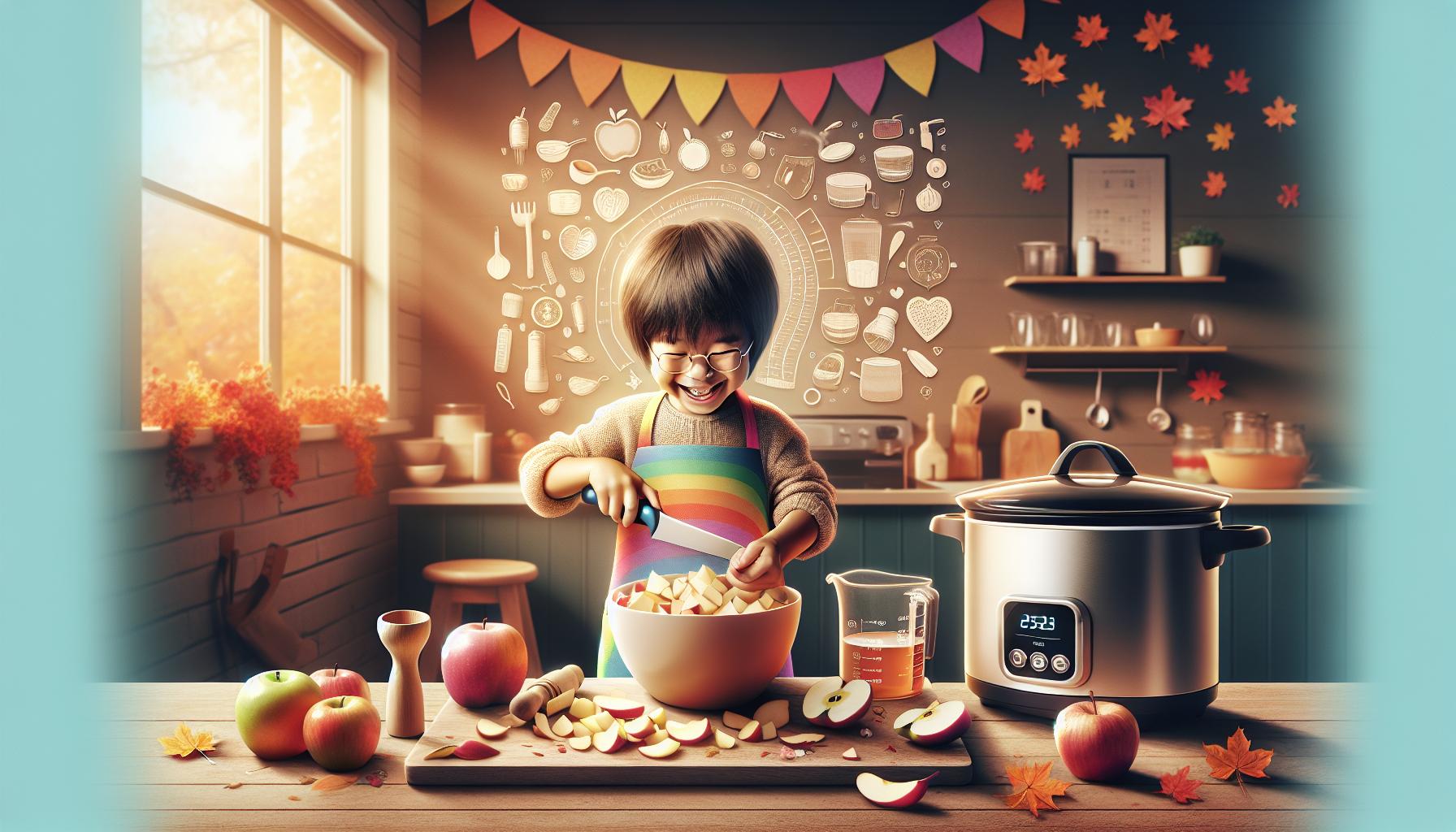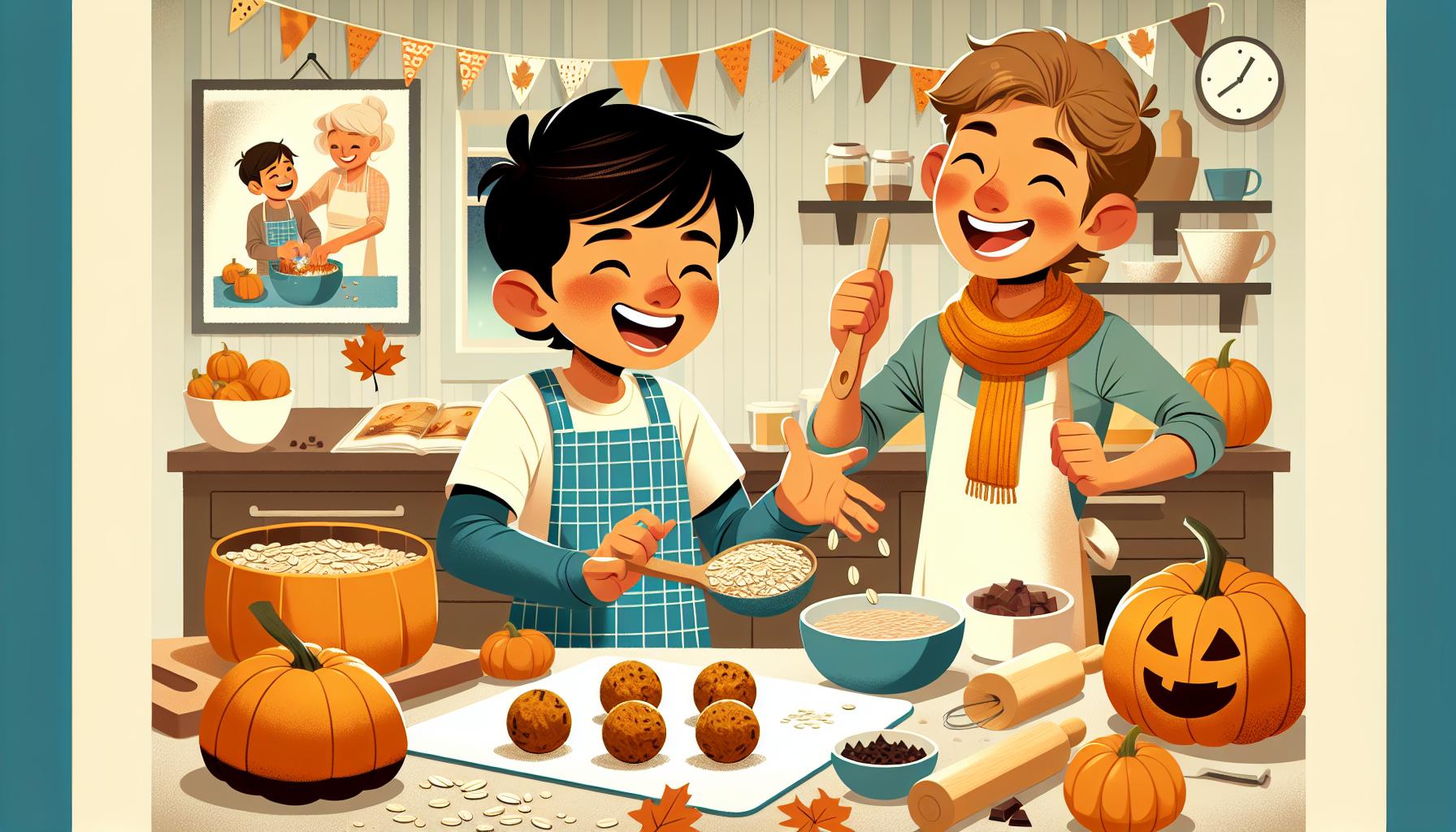
Fall brings a bounty of fresh ingredients and endless opportunities to get kids excited about cooking. We know how challenging it can be to find recipes that are both kid-friendly and seasonal. What better way to celebrate autumn than by creating delicious dishes together in the kitchen?
From sweet apple crisps to savory pumpkin soups we’ve gathered the perfect collection of fall harvest recipes that’ll make cooking fun and educational for children. These recipes are simple enough for little hands to help with while teaching valuable kitchen skills and healthy eating habits. Plus they’ll fill your home with wonderful autumn aromas that make the season feel extra special.
Key Takeaways
- Fall harvest cooking provides an excellent opportunity to teach kids kitchen safety, measurement skills, and healthy eating habits through hands-on activities
- Age-appropriate kitchen tasks range from simple activities like washing fruits (ages 3-5) to more complex skills like using hand mixers and following recipes independently (ages 9-12)
- Kid-friendly fall recipes focus on seasonal ingredients like apples, pumpkins, and squash, which can be transformed into healthy snacks and meals with proper adult supervision
- Essential kitchen tools for young chefs include plastic knives, non-slip mixing bowls, and child-sized equipment to ensure safety while maintaining engagement
- Simple recipes like homemade applesauce, no-bake pumpkin energy balls, and roasted vegetables help children develop cooking confidence while creating nutritious autumn treats
Fall Harvest Safety Tips For Kids in The Kitchen
Teaching kids kitchen safety creates confident young chefs who understand responsibility. Here’s how to keep cooking adventures safe while maintaining the fun.
Essential Kitchen Tools For Young Chefs
Child-sized kitchen tools protect small hands during food preparation. Here’s what young chefs benefit from:
- Plastic knives with serrated edges for cutting soft fruits
- Non-slip mixing bowls with rubber bottoms
- Heat-resistant silicone spatulas in bright colors
- Step stools with anti-skid surfaces
- Protective aprons with adjustable neck straps
- Child-sized oven mitts with grip patterns
- Measuring cups with large print numbers
- Digital timers with easy-to-read displays
Age-Appropriate Cooking Tasks
Kids excel at different kitchen activities based on their developmental stage:
Ages 3-5:
- Washing fruits under cool water
- Mixing dry ingredients with a spoon
- Adding pre-measured ingredients
- Mashing soft fruits with a fork
- Tearing lettuce leaves for salads
Ages 6-8:
- Measuring dry ingredients
- Kneading dough with clean hands
- Greasing baking pans
- Using cookie cutters
- Rolling dough with a pin
Ages 9-12:
- Peeling vegetables with supervision
- Following simple recipes independently
- Using a microwave with guidance
- Operating a hand mixer
- Reading food thermometers
These tasks keep young helpers engaged while maintaining safety standards in fall cooking activities.
Easy Apple Recipes Kids Can Make

Fall apples create perfect opportunities for kids to develop cooking skills with these simple recipes. These activities introduce measuring, mixing, and safe food handling while creating delicious treats.
Classic Applesauce From Scratch
Making homemade applesauce lets kids practice peeling, measuring, and stirring techniques. Here’s a kid-friendly process:
- Peel 6 medium apples using a child-safe peeler
- Cut apples into 1-inch chunks with plastic knives
- Mix apple pieces with:
- 1/4 cup water
- 2 tablespoons honey
- 1/2 teaspoon cinnamon
- Cook in a slow cooker for 4 hours on low
- Mash with a potato masher until smooth
Kids can customize their applesauce by:
- Adding extra cinnamon
- Mixing in nutmeg
- Stirring in vanilla extract
- Adjusting sweetness with maple syrup
Cinnamon Apple Chips
Crispy apple chips offer a healthy snacking alternative kids can create. The recipe involves:
- Slice 2 apples into 1/8-inch rounds using:
- Mandoline with safety guard
- Adult supervision
- Core removal
- Season apple slices:
- Sprinkle with cinnamon
- Add a pinch of sugar
- Place on parchment paper
- Bake at 200°F (93°C):
- Flip after 1 hour
- Continue for 1 more hour
- Cool for 10 minutes
- Use airtight containers
- Label with date
- Store up to 1 week
- Keep in a cool, dry place
Fun Pumpkin Treats For Little Bakers

Pumpkin treats offer an exciting way for kids to explore fall flavors while developing basic cooking skills. These simple recipes create memorable kitchen moments with young bakers.
No-Bake Pumpkin Energy Balls
No-bake pumpkin energy balls combine simple ingredients into tasty snacks kids can make with minimal supervision. Mix rolled oats, pumpkin puree, honey, and pumpkin pie spice in a large bowl. Add mini chocolate chips or dried cranberries for extra flavor. Let kids roll the mixture into 1-inch balls, then refrigerate for 30 minutes until firm.
| Ingredient | Amount | Notes |
|---|---|---|
| Rolled oats | 1 cup | Quick or old-fashioned |
| Pumpkin puree | 1/2 cup | 100% pure pumpkin |
| Honey | 1/4 cup | Natural sweetener |
| Pumpkin pie spice | 1 tsp | Adds fall flavor |
Mini Pumpkin Muffins
Mini pumpkin muffins create perfect portions for small hands to mix and enjoy. Kids practice measuring dry ingredients like flour, sugar, and spices into one bowl. In another bowl, they’ll combine pumpkin puree, oil, and eggs. Young bakers learn to fold wet ingredients into dry ingredients without overmixing. Fill mini muffin tins 2/3 full and bake for 12-15 minutes at 350°F.
| Baking Step | Time | Temperature |
|---|---|---|
| Prep time | 15 mins | Room temp |
| Bake time | 12-15 mins | 350°F |
| Cool time | 10 mins | Room temp |
| Total time | 40 mins | – |
- Measuring ingredients
- Mixing wet and dry components
- Rolling dough into shapes
- Following recipe steps
- Using kitchen tools safely
Kid-Friendly Squash Recipes
Fall squash transforms into delicious comfort foods that kids love to prepare and eat. These recipes make squash approachable and exciting for young chefs while incorporating essential nutrients into familiar dishes.
Butternut Squash Mac and Cheese
This creamy twist on classic mac and cheese sneaks extra vegetables into a kid-favorite dish. Kids can help measure ingredients and practice stirring skills with these simple steps:
- Pour 2 cups of cooked pasta into a baking dish
- Mix 1 cup pureed butternut squash with 1 cup milk
- Add 1½ cups shredded cheddar cheese to create the sauce
- Sprinkle ¼ cup breadcrumbs on top before baking
- Bake at 350°F for 20 minutes until bubbly
Tips for involving kids:
- Let them mash pre-cooked squash with a potato masher
- Practice counting cheese cups together
- Take turns stirring the sauce
- Watch the cheese melt through the oven window
Roasted Squash Seeds
Transform squash seeds into a crunchy snack that kids can season their way. Here’s how children can participate:
Simple preparation steps:
- Clean seeds in a colander under running water
- Pat seeds dry with paper towels
- Toss with 1 tablespoon olive oil
- Spread on a baking sheet
Kid-friendly seasoning combinations:
- Cinnamon sugar (1 tsp cinnamon + 2 tsp sugar)
- Pizza flavor (½ tsp garlic powder + ½ tsp Italian herbs)
- Ranch style (1 tsp ranch seasoning mix)
- Sweet maple (1 tbsp maple syrup + pinch of salt)
Roast at 300°F for 20 minutes, stirring once halfway through. Kids can shake seasoning containers create their own flavor combinations.
Creative Ways to Cook With Fall Vegetables
Fall vegetables transform into colorful dishes kids love to prepare. These recipes make cooking vegetables exciting while teaching basic kitchen skills.
Rainbow Roasted Root Vegetables
Roasting brings out the natural sweetness in root vegetables that appeals to young taste buds. Kids can help wash carrots, parsnips beets then cut them into similar-sized pieces using child-safe knives. They’ll enjoy tossing the vegetables in olive oil with simple seasonings like salt pepper garlic powder. The vegetables roast at 400°F for 25-30 minutes creating crispy edges kids can’t resist.
Sweet Potato Fries
Sweet potato fries offer a nutritious twist on a kid-favorite snack. Children practice knife skills by cutting peeled sweet potatoes into 1/4-inch strips. Mixing the fries with olive oil salt cinnamon creates a sweet-savory coating. Kids spread the fries in a single layer on a baking sheet then bake at 425°F for 20-25 minutes flipping halfway through. The result: crispy fries with a naturally sweet center.
Table: Vegetable Cooking Times and Temperatures
| Vegetable | Temperature (°F) | Time (minutes) |
|---|---|---|
| Root Vegetables | 400 | 25-30 |
| Sweet Potato Fries | 425 | 20-25 |
- Wash vegetables in cold water
- Peel vegetables with safe peelers
- Cut soft vegetables with plastic knives
- Measure seasonings with measuring spoons
- Toss vegetables in oil using tongs
- Arrange vegetables on baking sheets
Conclusion
Fall cooking with kids opens up a world of culinary adventures and learning opportunities. We’ve explored recipes that transform seasonal ingredients into delicious treats while teaching valuable kitchen skills. These kid-friendly creations bring families together and make autumn cooking both fun and educational.
Remember that every moment spent in the kitchen with children plants seeds of confidence curiosity and creativity. Whether you’re making apple crisps pumpkin treats or roasted vegetables you’re creating memories that will last far beyond the fall season. Let’s embrace these precious moments and watch our little chefs grow through the magic of seasonal cooking!
Frequently Asked Questions
What age is appropriate for children to start cooking?
Children can start helping in the kitchen as early as 2-3 years old with simple tasks like washing vegetables or stirring ingredients. By age 5-6, they can measure and mix ingredients. Around 8-10 years old, they can begin using kitchen tools under supervision. Always assess your child’s individual maturity level and motor skills before assigning kitchen tasks.
What are some essential safety tips for cooking with kids?
Keep sharp objects out of reach, use child-safe kitchen tools, supervise hot surface activities, enforce hand washing, and establish clear kitchen rules. Ensure children wear appropriate attire (no loose clothing) and teach them basic kitchen safety like handling hot items and proper food hygiene.
Which fall recipes are best for beginners?
No-bake pumpkin energy balls, applesauce, and cinnamon apple chips are perfect starter recipes. These require minimal cooking and simple techniques like measuring, mixing, and stirring. They’re safe, fun, and allow children to see quick results while building confidence in the kitchen.
How can I make cooking educational for children?
Incorporate counting while measuring ingredients, discuss food science during cooking processes, teach fractions through recipe measurements, and explain the origins of different ingredients. Use cooking time to discuss nutrition, seasonal produce, and cultural food traditions.
What kitchen tools are recommended for children?
Child-sized tools include plastic knives, non-slip mixing bowls, measuring cups and spoons, heat-resistant spatulas, and sturdy step stools. Look for tools with rubber grips and bright colors that make cooking both safe and engaging for kids.
How do I keep kids interested in cooking activities?
Let them choose recipes, assign age-appropriate tasks, make the process fun with games and songs, and celebrate their achievements. Allow them to be creative with ingredients and decorations while maintaining safety guidelines.
What are some healthy fall snacks kids can make?
Roasted squash seeds, sweet potato fries, apple chips, and pumpkin energy balls are nutritious options. These snacks teach basic cooking skills while providing healthy alternatives to processed foods. They’re also great for developing creativity with different seasonings and flavors.
How can I teach portion control and nutrition while cooking?
Use cooking as an opportunity to discuss balanced meals, food groups, and proper portion sizes. Involve children in meal planning, show them how to read nutrition labels, and explain the benefits of different ingredients used in recipes.

